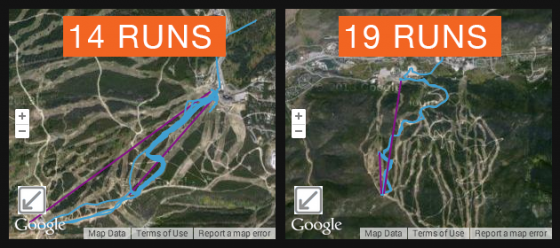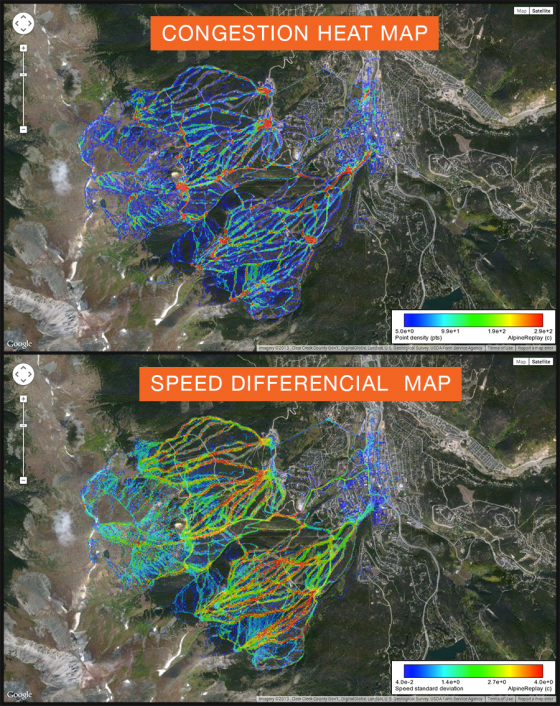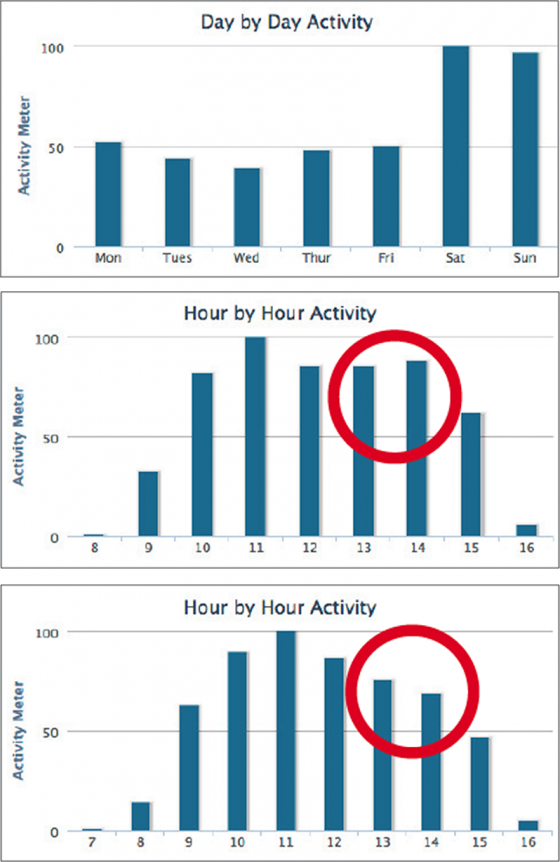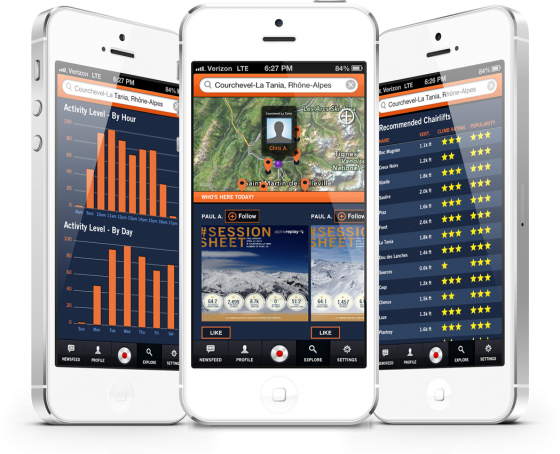Data
Five fascinating lessons from 460,000 skier days and 5.1 billion feet of vert.
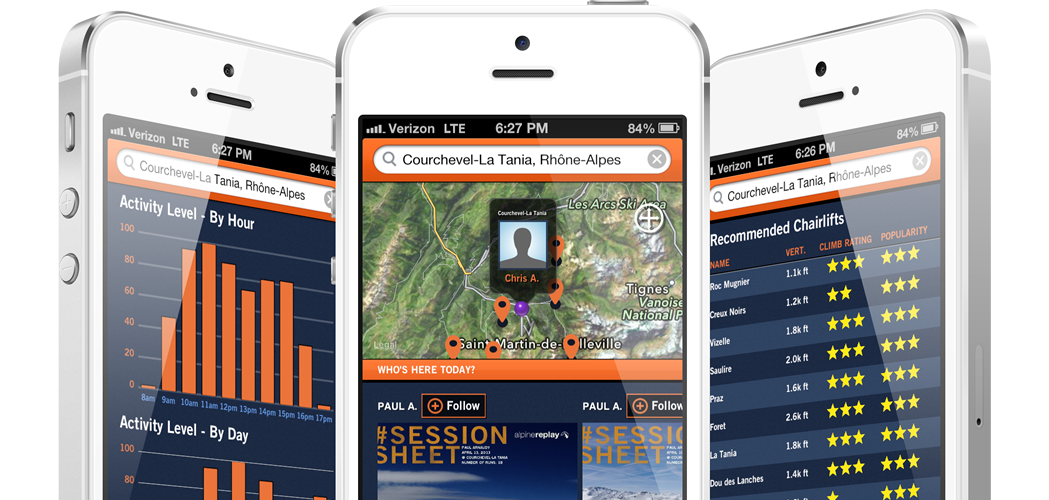

LOKSHIN
In the world of skier tracking, there’s stuff EpicMix and there’s stuff like AlpineReplay (now Trace). Though over 50 skier-tracker apps exist, at one point AlpineReplay was getting more use than the rest of them combined…and then some.
Three years of skier data led to the launch of a board-mounted device called Trace (if you haven’t checked it out yet, do it now, it’s some insanely innovative tech) but right after they did I gave Alpine Replay’s David Lokshin another outlet for his lesson-filled brain to glean some lessons from tracking 460,000 ski days and 5,100,000,000 feet of vert.
Really fascinating stuff. Take a look.
—
1. People don’t really take their phones out while skiing.
With AlpineReplay, you have to sync data with our servers to get parsed results. We have a bunch of people who sign up, and on the first use they upload multiple times–sometimes after every run–to see their speed, accumulated vertical, etc. This lasts only a day. Most AlpineReplay athletes only check twice a day, at lunch and at the end of the day.
This has implications when developing tools and apps for customers. We used to have stuff like trail info and maps, open lifts, etc. all inside AlpineReplay. No one ever used those pages. They were just wasted real estate. And it makes sense: you have gloves on, it’s cold, it’s hard to see the phone screen with your goggles on, etc.
This runs in direct opposition to what we hear from users. “I wish AlpineReplay had trail maps in the app,” they say. But we’ve tried this (and in multiple different ways) and the data is overwhelming that they don’t take their phone out on the mountain and they don’t use information like open trails and lifts.
This also explains why AlpineReplay is much more popular than many resort apps with tons of features. AlpineReplay focuses on the basics (read: what users actually want).
2. It does not matter how large a resort is, an individual uses mostly 2-3 lifts over and over again.
This is especially true for “park rats.” Athletes on AlpineReplay that rank high on jumps per ski day often take a single lift a dozen times throughout the day.
3. Skiers / boarders aren’t great at segregating themselves across the mountain based on ability.
There are a lot of places where fast trails and slow trails cross. Ski responsibly. Let’s take the two heat maps below:
The top map shows how crowded different spots on the mountain are for Breck. We just take all skiers for a popular weekend, and each time they pass through a location, mark it. Red spots are areas that lots of skiers go through, blue areas are reasonably less used.
The bottom map shows speed differential. This answers the question of, “What is the difference between the slowest 20% of skiers through this point and the fastest 20% of skiers through this point?” Areas where the speed differential is the largest (in red) is where accidents (crashes) happen. A resort would be wise to limit the areas in red.
But as you can see, literally every vein down to the bottom of the mountain has red. Every single trail. Expert skiers (those who travel to the top of the mountain) do a good job of segregating by skill (cool blue colors) but as they come down, they take every avenue possible. They mix with beginners in these areas and create situations where crashes (and injuries) are likely. Personnel can be deployed and trails groomed in a way to encourage seasoned skiers and boarders who want to go fast to stick to a certain part of the mountain.
4. Most resorts show lower usage during lunch and post lunch hours, but some resorts don’t have a lunch usage dip.
Our guess is that they a.) miss on possible revenue from the food concessions and b.) don’t have activities that lure skiers off the slopes into revenue producing venues.
5. We rank lifts by several criteria and usually the “best “ lifts (ones that travel distance and vertical quickly) are the most popular. However, there are often hidden gems that are as good but are not much used.
Resorts can do a better job of advertising those to reduce crowding at the most popular. Users, before coming to a resort, check out the Explore function on the new version of the AlpineReplay app and take advantage of these lifts.
Bonus – Good snowboarders have a much smaller landing shock on large jumps than novice/intermediate jumpers have at small or medium jumps. This is because when they land, they bend at the knees instead of bend at the waist. We see this very clearly in the accelerometer data. If you like jumps, learn first how to land properly to save your knees.
About Gregg & SlopeFillers
I've had more first-time visitors lately, so adding a quick "about" section. I started SlopeFillers in 2010
with the simple goal of sharing great resort marketing strategies. Today I run marketing for resort ecommerce and CRM provider
Inntopia,
my home mountain is the lovely Nordic Valley,
and my favorite marketing campaign remains the Ski Utah TV show that sold me on skiing as a kid in the 90s.
Get the weekly digest.
New stories, ideas, and jobs delivered to your inbox every Friday morning.

